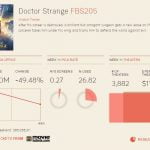
Smart technology continues to streamline and transform nearly all aspects of our lives — monitoring our sleep patterns, allowing us to work from anywhere at any time and even helping to find cures for diseases like Zika.
But more than optimizing tedious workflows or gamifying daily activities, smart technology has helped to increase our baselines and has made us better innovators and enactors of change. Besides providing the opportunity to go beyond old performance barriers, it’s opened up an entirely new way to experience the world around us.
Consider how technology is being used in the world of professional sports. Sensors and wearables connected to the cloud are providing instantaneous access to data and analysis, providing meaningful insights that can be used to improve performance. Unstructured data can now become a driver for unmatched success.
For instance, USA Cycling has ditched traditional means of tracking performance for proprietary hardware and software that allows them to better gauge how the riders are training — a huge factor in the road to the recent Summer Games. Particularly, working with IBM, the team harnessed emerging technologies to solve its analytics challenge. They are no longer extracting data manually from power meters and sensors after each training session. Instead, data is gathered in real time from multiple sources — including power meters, heart-rate monitors and wearable muscle-oxygen sensors from BSX Insight, which use a combination of LED lights and algorithms to generate unique athlete profiles, resulting in improved performance monitoring and training.
The data is then sent to the coach’s iPad from the cloud in the form of a summary iOS dashboard that presents metrics such as W-prime depletion and matches burned in an intuitive graphical format. Using Solos’ smart glasses, riders also gain intelligence from new data generated via a personalized heads-up display of the most useful key metrics while they are actually on the track during a practice session.
As mentioned above, data used to be collected from multiple sources and then analyzed by hand, so providing feedback on training sessions took hours or even days. Now a mobile app connected to the cloud changes all that, syncing in real time with sensors on the bikes and riders. So, for example, if an athlete spends unnecessary energy, she can take it down a notch to make an instant impact on her performance. Coaches can identify and address areas of weakness in a timely manner, which is especially important when gearing up for a big race.
Cycling isn’t the only sport benefiting from cloud and analytics. The NFL recently announcedit would use sensors to collect and analyze in-game data during the 2016 season. Custom chips inserted into the footballs used for field goals will be used to collect data on kicks — research that will have an impact on changes in officiating, specifically regarding narrowing the goalposts down the road. This is on top of the sensors NFL players are already wearing to track position, speed, distance and more.
In addition to allowing athletes to train smarter and make marginal improvements that are game-changers to performance, access to data can also be a major benefit to the fan experience. Cloud and analytics technology have exciting potential for the fan experience, including the streaming of real-time data. Virtual reality is also gaining traction.
On the racetrack, NASCAR drivers and fans are beginning to experience digital dashboards. Not only do the dashboards compile data for the driver, like lap times, tire pressure and pit-stop range, but NASCAR hopes to bring the same experience to the fans, as well. Fans will eventually be able to access the same dashboards on their mobile devices, seeing what their favorite drivers see and how they react to different situations.
Virtual reality was used by NBC to enhance the 2016 Rio Olympics viewing experience. Samsung Gear VR users were able to view exclusive coverage of the games, including the Opening and Closing Ceremonies, the men’s basketball final and more, through the NBC Sports app. This new way of experiencing the world’s greatest sporting event helped fans a million miles away feel as if they were in Rio.
These examples are just the first rumblings of a massive technological shift that will change how we experience everything — sports and beyond. Baseball fans will be able to see someone slide into first from any angle and hockey players will be able to perfect their slap shots using analytics. Players, coaches and fans will understand their game on a deeper level, allowing for new strategies and enhanced experiences.
Outside of sports, we’re already seeing smart cities crop up that streamline processes from energy use to garbage disposal. In business, organizations across industries are turning the lens inward to optimize teams and boost productivity with data at the heart of the effort. It’s exciting to think of the opportunities emerging technologies can present across all industries. Are you ready for the cloud and data-driven future?
[Source:-TC]







